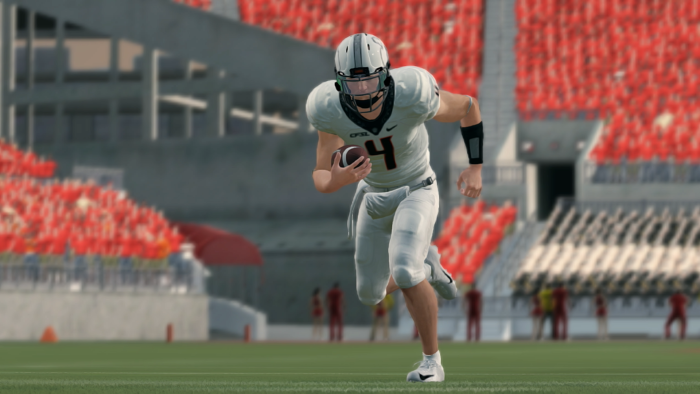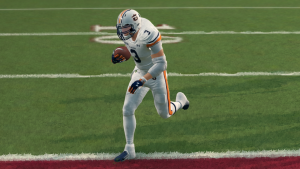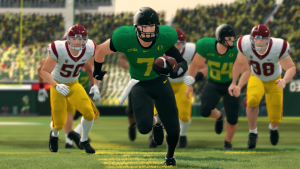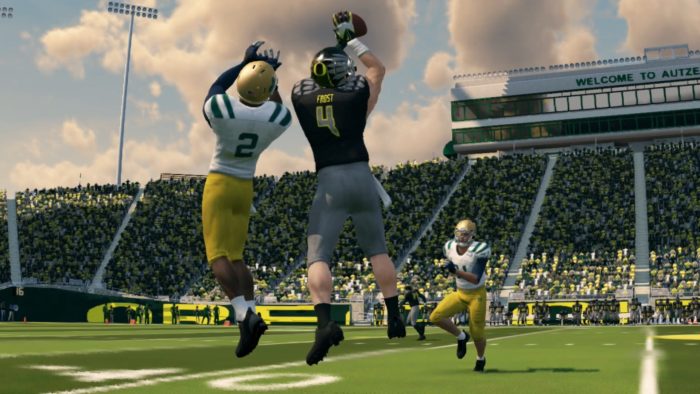
By: Ryan Moreland (@ryanmoreland)
How JTR Works
JTR ranks players by their comparison to the league average using as unbiased stats as possible. By unbiased stats, we mean stats that don’t show a preference for one style of play over another. For example, we expect a quarterback in an air raid system to throw the ball more often than a quarterback in a multiple set. So comparing the two based on completions wouldn’t be fair. Once we determine stats that we believe to be unbiased, we create a league average. Outperforming the league average earns a player positive points. Stats that fall below the league average will earn a player negative points. Points for each stat are calculated and combined with a base rating given to each player. The combination results in a player’s JTR metric score. 0 is the worst possible score and 100 is the best possible score.
For QBs, the stats we chose to use are completion percentage, yards per attempt, touchdown percentage, interception percentage, passing yards per game, and unique rushing index. The rushing index attempts to exclude sacks from a quarterback’s rush totals to get a more accurate sense of them as a runner. Also, QBs cannot take negative points from the rushing index (outside of fumbles). This is because a running ability for a quarterback is a plus, but not a requirement.
JTR is not a predictive metric. It cannot tell the future. It can only measure what a player has done up to that point.
Note: This is a complicated system that is difficult to explain in an easily digestible way. If you have more questions about how it works, please reach out. We would be more than happy to answer your questions.
JTR Rankings
| Rank (Last Week) | Player | Team | JTR Score (Change) |
| 1 (2) | Kyson Carey | Bowling Green | 89.175 (+1.838) |
| 2 (1) | Loki Gunderson | Clemson | 88.342 (-1.931) |
| 3 (10) | Ayden Martinez | North Carolina | 84.751 (+8.439) |
| 4 (3) | McKade Alber | Toledo | 84.547 (-2.081) |
| 5 (14) | Topher Foreman | Michigan | 84.237 (+10.429) |
| 6 (4) | Charlie Sammons | Notre Dame | 82.526 (-3.369) |
| 7 (8) | Avery Ware | Texas | 82.258 (+4.780) |
| 8 (11) | Mateo Walker | Miami | 80.687 (+4.748) |
| 9 (6) | Cece Range | Alabama | 79.746 (-1.182) |
| 10 (13) | Baker Thomas | Auburn | 78.899 (+4.834) |
| 11 (16) | Ryan Ravenhill | Florida State | 77.234 (+8.365) |
| 12 (17) | Helix Myers | Pittsburgh | 75.214 (+8.061) |
| 13 (9) | Derrick Power | Oklahoma | 74.097 (-2.407) |
| 14 (7) | Moses King | Kentucky | 73.835 (-4.501) |
| 15 (5) | Del Toro | Ohio | 72.165 (-9.605) |
| 16 (12) | Tony Ellis | West Virginia | 70.329 (-4.019) |
| 17 (15) | Ludwig Friedman | Georgia | 69.349 (-0.882) |
| 18 (19) | Shaker Mayflower | Kent State | 68.957 (+3.907) |
| 19 (21) | Sam Dobbins | Boise State | 67.806 (+6.533) |
| 20 (25) | Ryan Moreland | Oklahoma State | 67.163 (+13.237) |
| 21 (24) | Terry Olliff | Northern Illinois | 65.882 (+11.392) |
| 22 (18) | Brantley Gauci | Oregon | 65.506 (-0.864) |
| 23 (23) | Beau Dale | Florida | 63.973 (+6.000) |
| 24 (20) | Greg Cooksey | Eastern Michigan | 62.579 (+0.441) |
| 25 (22) | Logan Radloff | Ohio State | 61.961 (+2.537) |
| 26 (26) | Dylan Shumate | Illinois | 47.191 (+0.695) |
Findings
The gap this season between the best and worst scores is narrower than it was last season. This is largely because we don’t have standout performers like we did last season. Zero QBs got a positive score in every single stat category. At this time last season, four QBs were completely positive.
The largest increase in score this week belongs to Oklahoma State QB Ryan Moreland. His performance (especially on the ground) against Ohio State earned him a 13.237-point jump in his score. The second-highest increase belonged to NIU’s Terry Olliff, who finished one spot behind Moreland in the rankings.
These were nice improvements, but not good enough for either QB to be this week’s highest jumper on the leaderboard. That honor belongs to Michigan’s Topher Foreman who jumped from 14th to the top five this week. Foreman’s 10.429-point increase was the only other double-digit jump in points.


